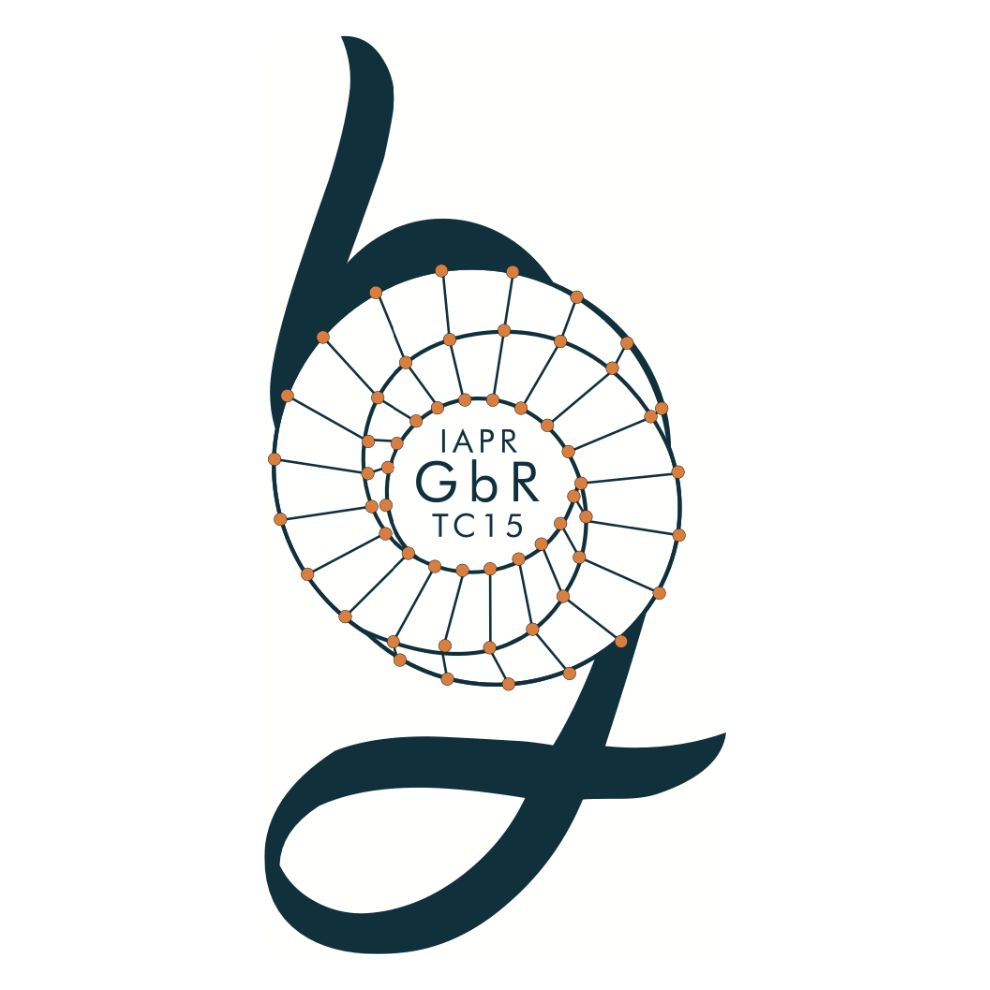Graphs are an important data structure used for the representation of entities and relationships in the field of structural pattern recognition, being widely used for applications such as image segmentation, shape recognition, scene parsing, document analysis, social network mining, and so on. While some of these applications have been in use since many years, the availability of very large datasets of structured data (e.g. from bioinformatics or social networks) and the emergence of new computational models (e.g. deep neural networks) introduce new challenges in the field of graph-based pattern recognition, such as matching for extremely large graphs (possibly with massively parallel algorithms), deep learning of graph models, inference in graphical models incorporating multi-source knowledge and contexts, applications to incomplete and noisy data, and so on.
Given the multitude of scientific problems and the wide applications of graph-based representations, the IAPR TC-15 (Graph-based Representations in Pattern Recognition) has sponsored a series of workshop called IAPR-TC15 Workshop on Graph-based Representations in Pattern Recognition (GbR). The workshops have benefitted the community in triggering scientific research and exchanging progresses in fields at the intersection between graph theory and pattern recognition, computer vision/image analysis and machine learning.
This special issue is aimed to report the state of the art in theory, methods and applications in graph- based pattern representation and recognition. The scope ranges from various methodological and algorithmic issues of graph-based representation, learning and inference, to several applications in pattern recognition, computer vision and data mining.
The topics of interest for this special issue include (but are not limited to):
- Graph based methodologies for pattern recognition
- Graph representation of images and shapes
- Graph neural networks
- Graph matching and classification
- Graph distance and similarity measures
- Graph based learning and clustering
- Graph kernels and graph embeddings
- Graphs in bioinformatics
- Graph in social network analysis
- Other graph based applications in pattern recognition
Editors
Prof. Pasquale Foggia (Managing guest-editor)
Università di Salerno (Italy) E-mail: pfoggia@unisa.it
Prof. Mario Vento
Università di Salerno (Italy) E-mail: mvento@unisa.it
TC15 Endorsement
The IAPR Technical Committee #15 on Graph-based Representation in Pattern Recognition fully supports and promotes this Special Issue, and will use its web site and its mailing list to give visibility to its publication.
Important dates
- Paper Submission Deadline:
December 1-20, 2023( January 8, 2024) - First-round notification: February 18, 2024
- Revised manuscript submission: April 21, 2024
- Notification of final decision: June 30, 2024
- Final version of the paper: July 31, 2024
Submission instructions
Prospective authors are invited to upload their manuscripts during the submissions period (December 1, 2023 to January 8, 2024), using the PRL Editorial Manager system, using the following link: https://www.editorialmanager.com/prletters/default2.aspx; please remember to select as article type: VSI:GbRNRC. Papers should be prepared by adhering to the PRLetters guidelines, that can be found here: https://www.sciencedirect.com/journal/pattern recognition-letters/publish/guide-for- authors . Please note that the initial submission should not exceed 7 pages; the revised version of the papers can be extended to 8 pages to incorporate the reviewers suggestions.
Submitted papers must not have been published previously, nor be under consideration for publication elsewhere. If the submissions are extended works of previously published papers, the original works must be quoted in the References and a description of the changes that have been made must be provided. Guest editors will make an initial determination of the suitability and scope of all submissions, among the other things by ensuring that:
1. The title of the submission is different from that of the previously published paper;
2. The previously published paper is included in the References of the submission;
3. The main differences between the submission and the previously published paper are clearly sketched when it is pointed out that the submission is an extended version of the previously published paper
4. The submission includes at least 30% technical contribution new with respect to that in previously published paper;
5. Parts that are common to the submission and the previously published paper must not be verbatim the same to avoid copyright infringement;
6. The Figures of the submission and of the previously published paper should not be the same. If some Figure from the previously published paper is indispensable, then the source of the Figure should be clearly indicated to avoid copyright infringement;
7. In the Authorship Confirmation Letter to be done when submitting PRL, Authors should quote the previously published paper as a related paper and should point out the reasons for submitting the extended paper. Since the previously published paper may not be available to referees, Authors should upload (as supplementary material) also the previously published paper, so that referees can compare the two papers and judge about originality.
